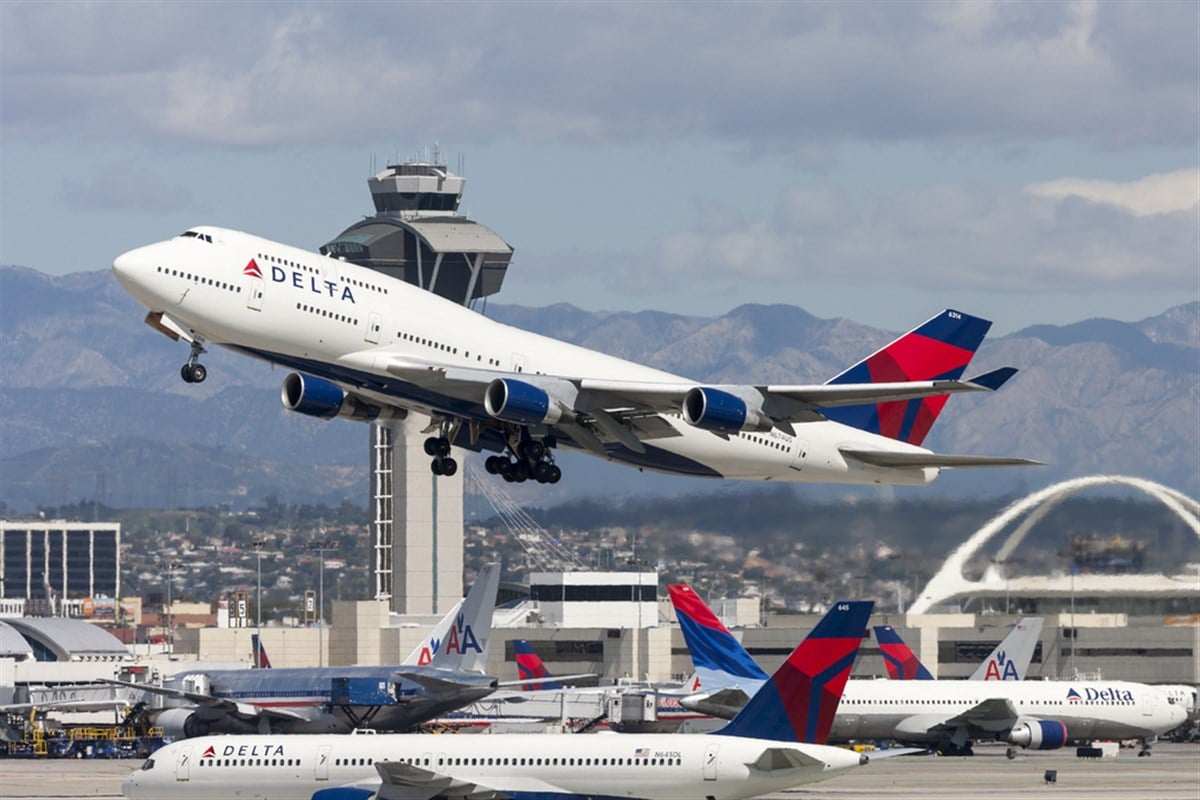
Airline and transportation stocks have been under pressure from weakening consumer discretionary trends lately, especially as inflation is now threatening to spike again after the – arguably premature – interest rate cuts coming from the Federal Reserve (the Fed), being the most aggressive policy shift since late 2007 in face of the financial crisis of 2008.
However, that could mean good news for investors who like to pick individual stocks since now every peer in the industry is suffering from the same issue, and not a single one is to blame. This is the same fact that helped analysts land higher price targets for shares of Delta Air Lines Inc. (NYSE: DAL) after the company announced its latest quarterly earnings results.
Others on Wall Street also expressed their bullish views for this stock, knowing that cyclically low oil prices and now interest rate cuts to help the consumer be more flexible and open to spending on items like travel and leisure could bring stocks like Delta Air Lines to a potential new 52-week high price to lead its peers. Price action is a good place to start a comparison for Delta Air Lines stock, so investors can start there, but there’s a lot more to look at.
Delta Air Lines Stock Maintains Leadership
Compared to its major competitors like United Airlines Holdings Inc. (NASDAQ: UAL) and American Airlines Group Inc. (NASDAQ: AAL), Delta Air Lines stock leads the way by trading at 96% of its 52-week high to show investors how bullish momentum now favors the company today.
United Airlines stock trades at a lower 94% of its 52-week high, while American Airlines has fallen behind to as much as 72% of its 52-week high. According to Delta Air Lines’ latest quarterly earnings press release, there is much more to boast about in terms of leadership.
Management quotes Delta delivered “Industry-leading” operational and financial performance, and here’s how investors can check whether that’s true or just window-dressing. Starting with operating cash flows, which often act as a proxy for a company’s earning power, investors will see Delta delivered up to $1.2 billion this quarter compared to $1 billion for the same quarter last year.
Even though this 20% boost is already attractive enough, investors need to keep in mind that the airline went through a major incident during the quarter, with regards to the CrowdStrike Holdings Inc. (NASDAQ: CRWD) outages that severely capped the company’s ability to generate cash flows.
Excluding this non-recurring event would have shown Delta to be in a much better position, and that’s why management has now guided Wall Street to expect a record December quarter and also why the stock’s balance sheet is now rated “investment grade” by those at Fitch. The optimism doesn’t stop there, however.
Wall Street's View on Delta Air Lines Stock: Why Investors Remain Optimistic
Even after the missed earnings, which now investors know are due to the CrowdStrike outages more than actual operating flaws at Delta Air Lines, markets, and Wall Street had many reasons to stay bullish on the stock moving forward into the rest of the year.
Starting with analysts, the consensus price target today is set at $64.3 today, which would call for a net 28.5% upside from where the stock trades today. Looking at the outliers is even more important than the consensus since that tells investors more about where Wall Street sees the stock headed.
Standing out are those analysts at Sanford C. Bernstein, reiterating a “Buy” rating for Delta Air Lines stock two days before the company reported its earnings results. This time, the rating came alongside a $ 65-a-share valuation, and to prove this view right, the stock would have to rally by as much as 28.7%, not to mention make a new 52-week high.
Institutional buyers entered Delta Air Lines stock ahead of earnings, anticipating a strong quarter. While results fell short, Delta's long-term potential remains appealing. SG Americas Securities increased holdings by 743.1%, netting their investment up to $14 million today.
They were followed by those at Kwmg with a 7.4% boost to end the quarter with a $4.5 million position. However, these are only drops in the bigger bucket of $654.4 million of institutional capital that made its way into Delta Air Lines stock over the past 12 months.
Finally, investors need to remember that some of the expectations placed on Delta Air Lines stock moving forward may be driven by the two-factor tailwinds coming from both low oil prices (which help to expand margins at airline stocks), as well as lower interest rates helping to keep the surge in travel numbers going.
As of the past quarter, the Transportation Security Administration (TSA) has reported a record-breaking number of daily travelers in the United States, showing resilience in the industry despite sticky inflation that remains above the 2% target set by the Fed.